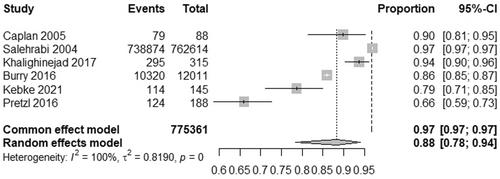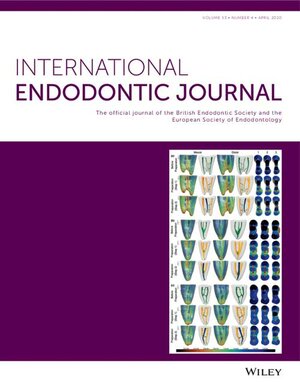The tooth survival of non-surgical root-filled posterior teeth and the associated prognostic tooth-related factors: A systematic review and meta-analysis
Abstract
Background
Analysis of the survival of root-filled posterior teeth and the associated prognostic tooth-related factors will enable clinicians to predict the outcome of root canal treatment.
Objectives
To investigate (i) the survival of root-filled posterior teeth and (ii) the tooth-related factors that may affect their survival.
Methods
Randomized controlled trials, comparative studies and observational studies assessing survival rates of root-filled posterior teeth with a minimum 4-year follow-up period were identified through an electronic search of the following databases up to January 2023: The Cochrane Central Register of Controlled Trials, Medline via PubMed, the Cochrane Database of Systematic Reviews, Embase, Web of Science and NIHR centre for reviews and dissemination. Two reviewers (SP and ML) independently selected the final studies based on pre-defined inclusion criteria. The Newcastle Ottawa Scale and the Cochrane Risk of Bias Tool for Randomized Trials were used to assess the risk of bias. Pooled weighted survival rates were analysed using a random effects meta-analysis model using DerSimonean and Laird methods. Descriptive analysis of studies describing any prognostic tooth-related factors was conducted.
Results
Of the 72 studies identified, data from 20 studies were included in the survival meta-analysis, and data from 13 of these studies were included in the descriptive analysis of tooth-related factors; 12 studies were retrospective, 7 were prospective, and one was a randomized control trial. The pooled survival rates at 4–7 years and 8–20 years of root-filled posterior teeth regardless of tooth type was 91% (95% CI, 0.85; 0.95) and 87% (95% CI, 0.77; 0.93), respectively. The prognostic tooth-related factors mentioned in the included studies were (i) remaining coronal tooth structure, (ii) ferrule, (iii) crown-to-root ratio (iv) tooth type and location (v) periodontal disease (vi) proximal contacts and (vii) cracks.
Conclusions
The meta-analysis suggests that root canal treatment has a high medium to long term survival outcome. The narrative summary identified 7 factors that affect tooth survival. However, there is a paucity of evidence, and more research is needed in this area.
Registration
PROSPERO Registration: CRD42021227213.


 求助内容:
求助内容: 应助结果提醒方式:
应助结果提醒方式:


